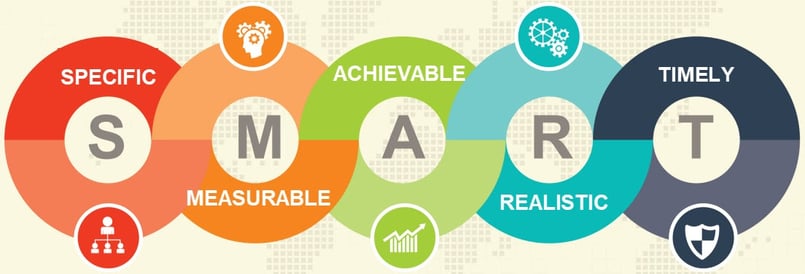Blog
3 Ways to Design e-Learning for the Modern Learner
The goal of instructional design is to bring about behavioral change. After all, we don’t train people to do things the way they’ve always done them. ...


3 Instructional Design Strategies for SMART Change
By Ann Iverson | November 09, 2017 | Custom Learning | 0 Comments
The goal of instructional design is to bring about behavioral change. After all, we don’t train people to do things the way they’ve always done them. And as instructional designers, most of us, on some level, are accountable for the success of that training. So, beyond designing highly engaging learning solutions, what can we do to ensure people actually change their behavior? How can we make sure our courses translate into measurable results for the individual and the organization?
We might be tempted to shift too quickly into design mode without a strategy for true performance change and ensuring it produces measurable results. And research shows that we will most likely fail our learners and the organization. Why? We’ve done everything right! We’ve identified the target audience and what successful behavior looks like. We’ve designed meaningful learning activities that allow learners to practice and master the desired behavior. How could we possibly fail? Because our learners may not want to change their behavior. Sure, they’ll complete the course because their supervisor directed them to, and maybe they’ll even give it a high rating. But on the most basic level, people are resistant to change.
Expecting and planning for resistance to change is a human-centered approach to design, and is essential to training success. In fact, research states that projects including a change management plan are six times more likely to achieve their objectives. Instructional designers are key to embedding change management strategies throughout the design process. Here’s how:
1. Ask the Right Questions for SMART ChangeAs you conduct the learner and need analysis, ask questions that identify training goals, learner characteristics, and what the desired performance looks like. Include important questions that result in SMART organizational change – change that’s specific, measurable, achievable, realistic, and timely – sound familiar? In early discussions, ask: What do you want to achieve with this change? Why? By when? And how will you know that the change has been achieved? Who is affected by this change, and how will they react to it? How much of this change can you achieve yourself, and what parts of the change do you need help with?

Stakeholders are your partners who can help communicate and implement the change. They are the people within the organization whose attitudes and actions have an impact on the success of the project. Engaging them early and often can help with the transition. Stakeholders can include:
- Delivery: Those who ensure the facilitation, management, and delivery of training
- Partners and/or Subject Matter Experts: Those who own or share the project objectives
- Influencers: Those who influence the project; others whom the learning audience respects and trusts as sources of information
- Decision Makers: Those who are responsible for making financial, practical, and policy decisions
3. Design for Performance Support
Expect some learners to push back. You may hear things like: "I like the old way of doing things” or "Why try to fix something that’s not broken?" The human brain is wired for habit, and physiologically we are programed to revert to old habits. Be sure to include design elements that help measure and monitor how learners are integrating the change. For example, after completing the course, support tools like coaching guides can help strengthen the new behavior. If coaches observe that an employee reverts to old processes or habits, the coach can check to see if the employee needs more training and reinforce the new way that they are expected to work.
A human-centered approach that accounts for the learners’ resistance to change will help your courses succeed. Design ideas for interactions may come to you quickly, but sometimes, especially when the training is for organizational change, it is helpful to take extra time to consider the ways you can deeply engrain that change within the mind and practice of the learner. Engaging and challenging interactions alone won’t lead to performance change without learner motivation and organizational support. Be sure to reach out to the right people. Good stakeholders can help you communicate the change in a way that is more meaningful, and performance support can reinforce the change, making the learning experience memorable and successful.
.png?width=135&height=135&name=Ann(250).png)
About the Author: Ann Iverson
Ann is an instructional designer for Allen Interactions who’s consulted for many years with a variety of clients, industries and projects. She learns best by making mistakes!
Comments
Would you like to leave a comment?
Related Blog Posts

By: Ann Iverson | Aug, 2015
Category: Custom Learning
.png?width=316&name=2024%20Blog%20Covers%20+%20Inline%20Graphics%20(8).png)
Blog
Learner Empathy Can Save Your Course Design
The goal of instructional design is to bring about behavioral change. After all, we don’t train people to do things the way they’ve always done them. ...
By: Ann Iverson | Feb, 2024
Category:

Blog
Putting Learners First
The goal of instructional design is to bring about behavioral change. After all, we don’t train people to do things the way they’ve always done them. ...
By: Ann Iverson | Mar, 2012
Category: Custom Learning
